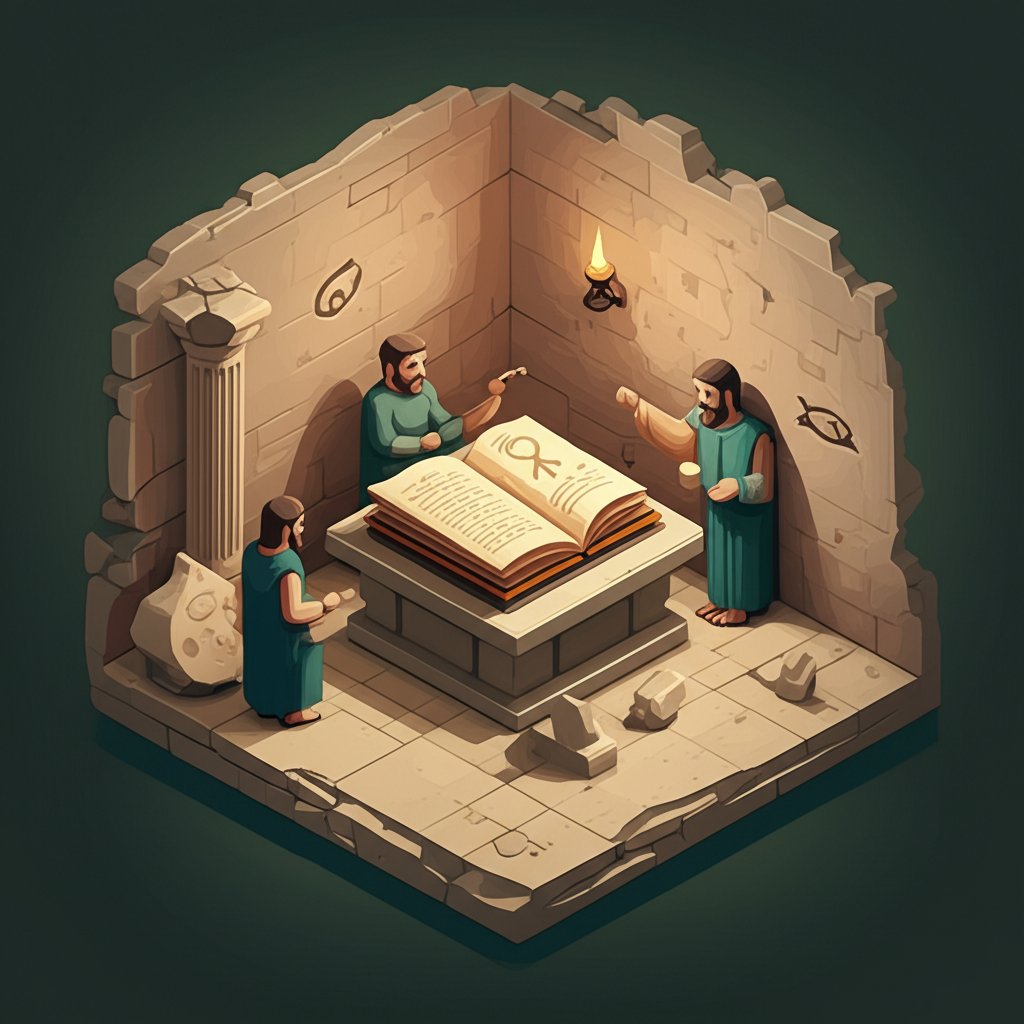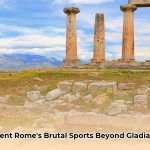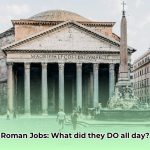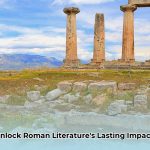The story of Christianity is one of profound transformation, unwavering faith, and enduring legacy. To truly grasp the essence of this global religion, we must embark on a journey back to its very foundations: the Early Church History. Far from a monolithic entity, the early church was a dynamic movement, shaped by fervent apostles, intellectual Church Fathers, brutal persecutions, and pivotal theological debates culminating in landmark events like the Council of Nicea. If you’ve ever wondered how a small band of followers in ancient Judea grew into a spiritual force that redefined the Western world, you’re about to discover the fascinating origins of Christianity, piece by compelling piece, through a comprehensive Early Church Timeline that spans centuries of struggle, growth, and divine revelation.
The Dawn of Christianity: The Apostolic Age (c. 30 – 100 AD)

The initial decades following Jesus Christ’s resurrection and ascension form the bedrock of Early Church History. This period, known as the Apostolic Age, witnessed the birth of the Christian community and its first explosive spread, guided by those who had walked intimately with Christ.
Jesus’ Ministry and the Great Commission
The seeds of Christianity were sown during Jesus’ earthly ministry. His teachings on love, forgiveness, redemption, and the Kingdom of God captivated many, though also stirred opposition. Upon his resurrection, Jesus issued the Great Commission to his disciples: “Go therefore and make disciples of all nations, baptizing them in the name of the Father and of the Son and of the Holy Spirit, teaching them to observe all that I have commanded you” (Matthew 28:19-20). This command set the trajectory for the nascent movement.
Pentecost and the Birth of the Church
A pivotal moment occurred around 30-33 AD with the outpouring of the Holy Spirit during Pentecost (Acts 2). This event ignited the apostles with divine power, enabling them to preach the Gospel boldly in various languages, leading to thousands of conversions in a single day. Pentecost is widely regarded as the historical birth of the Christian Church, marking its transition from a small group of disciples to a rapidly expanding community.
Key Apostles: Peter, Paul, and the Spread of the Gospel
Central to the Apostolic Age were figures like Peter and Paul. Peter, recognized as a leader among the Twelve, played a crucial role in establishing the church in Jerusalem and, traditionally, in Rome. His powerful sermons and miracles drew many early Jewish converts.
However, it was Paul, a former persecutor of Christians, who became the most influential missionary of the early church. After his dramatic conversion on the road to Damascus, Paul embarked on extensive missionary journeys throughout the Roman Empire, establishing Christian communities in major cities like Antioch, Corinth, Ephesus, and Rome. His letters, foundational to the New Testament, provided theological instruction and pastoral guidance to these burgeoning churches, articulating key doctrines that would shape the History of Christianity.
Early Christian Communities and Practices
Life in the very first Christian communities was characterized by shared meals, communal living, fervent prayer, and the teaching of the apostles. They met in homes, demonstrating radical love and mutual support amidst a pagan society often hostile to their beliefs. Baptism became the rite of initiation, and the Eucharist (communion) a central act of worship, commemorating Jesus’ sacrifice. These early practices laid the groundwork for future liturgical traditions.
The Formative Centuries: Persecution, Growth, and Apologetics (c. 100 – 313 AD)
Following the Apostolic Age, the church entered a period of intense growth and significant challenges. This era, often called the Ante-Nicene period, is crucial for understanding the resilience and intellectual development within Early Church History.
Roman Persecutions: Martyrs and Resilience
For nearly three centuries, Christians faced sporadic but often brutal persecution from the Roman Empire. Initially seen as a Jewish sect, Christianity’s refusal to worship Roman gods or deify the emperor led to accusations of atheism and disloyalty. Notable persecutions occurred under emperors like Nero (who blamed Christians for the Great Fire of Rome in 64 AD), Domitian, Trajan, Decius, and Diocletian.
The stories of Christian martyrs, who chose death over renouncing their faith, became powerful testimonies, inspiring others and strengthening the resolve of the faithful. Far from extinguishing the movement, persecution often solidified Christian identity and contributed to its spread, as witnesses carried the message to new regions.
The Apologists: Defending the Faith (Early Church Fathers)
In response to Roman accusations and societal misunderstandings, a new class of Christian intellectuals emerged: the Apologists. These Church Fathers used reason and rhetoric to defend Christianity against pagan critics and Roman authorities.
- Justin Martyr (c. 100-165 AD): A philosopher who converted to Christianity, Justin argued that Christianity was the “true philosophy,” superior to paganism, and that aspects of Greek thought were foreshadowings of Christ. His “Apologies” are key early defenses of the faith.
- Tertullian (c. 160-220 AD): A fiery North African lawyer and theologian, Tertullian famously declared, “The blood of the martyrs is the seed of the Church.” He was a prolific writer, defending Christian morality and doctrine, though he later veered into Montanism.
- Origen of Alexandria (c. 185-254 AD): An immensely influential scholar, Origen developed sophisticated methods of biblical interpretation and theological speculation. His works, though controversial in some aspects, significantly shaped early Christian thought.
Development of Christian Doctrine (Proto-Orthodoxy vs. Heresies like Gnosticism)
As Christianity expanded, it encountered diverse philosophical and religious ideas. This led to internal debates and the emergence of various belief systems deemed “heresies” by the developing mainstream (proto-orthodox) church.
- Gnosticism: A prominent challenge, Gnosticism held that salvation came through secret knowledge (gnosis), not faith. Gnostics often denied the full humanity of Christ, viewed the material world as evil, and taught a dualistic cosmology.
- Mani-chaeism: Founded by the Persian prophet Mani, this dualistic religion posited a cosmic struggle between good (light) and evil (darkness).
- Militant Monarchianism / Modalism: Taught that God is one, but manifests Himself in different “modes” (Father, Son, Holy Spirit) sequentially, rather than being three distinct persons in one God.
- Marcionism: Marcion (died c. 160 AD) taught that the God of the Old Testament was a cruel demiurge, distinct from the loving God revealed by Jesus. He rejected most of the Old Testament and much of the New Testament, assembling his own truncated canon.
The church responded to these challenges by clarifying its doctrines, emphasizing the teachings passed down from the apostles, and solidifying its theological framework. This era set the stage for the major councils that would define Christian orthodoxy.
The Canon of Scripture Takes Shape
During this period, the need for a definitive collection of authoritative Christian writings became increasingly apparent. While various Gospels and letters circulated, the church gradually recognized certain texts as divinely inspired and apostolic in origin. This process was complex and organic, driven by usage in worship and teaching, resulting in the eventual formation of the New Testament canon as we know it today, a crucial step in standardizing Christian belief and practice.
The Imperial Church: Legalization, Councils, and Consolidation (c. 313 – 600 AD)
The fourth century marked a revolutionary turning point in Early Church History, transforming Christianity from a persecuted minority into the dominant religion of the Roman Empire.
Constantine’s Conversion and the Edict of Milan
The pivotal event was the conversion of Emperor Constantine I. In 312 AD, before the Battle of Milvian Bridge, Constantine claimed to have seen a vision of a cross with the inscription “In Hoc Signo Vinces” (In this sign, conquer). Attributing his victory to the Christian God, he began to favor Christianity.
In 313 AD, Constantine, along with co-emperor Licinius, issued the Edict of Milan, which granted religious freedom throughout the Roman Empire, effectively ending the systematic persecution of Christians. This was a monumental shift, ushering in an era where Christianity could openly flourish, build grand basilicas, and gain significant societal influence.
The Council of Nicea (325 AD): Defining the Trinity
The legalization of Christianity brought new challenges. Internal theological disputes, previously suppressed by persecution, now threatened the unity of the empire. The most significant of these was the Arian Controversy.
The Arian Controversy
Arius, a presbyter from Alexandria, taught that Jesus Christ, while divine, was a created being, subordinate to God the Father. This doctrine, known as Arianism, profoundly challenged the traditional understanding of Christ’s divinity and the nature of God. It sparked widespread controversy, dividing bishops and communities across the empire.
The Nicene Creed and its Legacy
To resolve this crisis, Emperor Constantine convened the first ecumenical council of the church in 325 AD in Nicaea (modern-day İznik, Turkey). Over 300 bishops attended, debating the nature of Christ. The council ultimately condemned Arianism and affirmed the full divinity of Jesus Christ, declaring him to be “homoousios” (of the same substance) with the Father.
The outcome was the formulation of the Nicene Creed, a foundational statement of Christian belief that articulated the doctrine of the Trinity – one God in three persons: Father, Son, and Holy Spirit. This creed remains a cornerstone of Christian orthodoxy for most denominations today and represents a critical moment in the development of Christian systematic theology.
Other Ecumenical Councils: Chalcedon and Constantinople
The Council of Nicea was not the end of theological debate. Subsequent centuries saw other major councils convened to address Christological controversies:
- Council of Constantinople (381 AD): Reaffirmed the Nicene Creed, further clarified the divinity of the Holy Spirit, and condemned other heresies like Apollinarianism.
- Council of Ephesus (431 AD): Condemned Nestorianism (which taught that Christ had two separate persons, one divine and one human) and affirmed Mary as the Theotokos (God-bearer).
- Council of Chalcedon (451 AD): Faced with the Eutychian heresy (Monophysitism, which held that Christ had only one, divine nature), the council affirmed the doctrine of Christ having two natures—fully divine and fully human—united in one person, “without confusion, without change, without division, without separation.” This definition remains central to most Christian traditions.
These councils, driven by the need to clarify orthodox belief, were instrumental in shaping the definitive doctrines that form the History of Christianity.
The Rise of Monasticism
Another significant development was the rise of monasticism. Beginning in the deserts of Egypt with figures like Anthony the Great, individuals sought spiritual perfection through asceticism, solitude, and devotion. Monastic communities, both eremitic (hermit-like) and cenobitic (communal), spread rapidly, influencing spiritual practices, preserving ancient texts, and acting as centers of learning and charity throughout the late Roman Empire and beyond.
Emergence of the Papacy and Ecclesiastical Hierarchy
With the legalization of Christianity, the organizational structure of the church became more formalized. Bishops in major cities—especially Rome, Constantinople, Antioch, Alexandria, and Jerusalem—gained increasing prominence. The Bishop of Rome, in particular, began to assert a unique primacy, often appealing to Peter’s role as the “rock” upon which the church would be built. This period saw the gradual consolidation of a hierarchical structure, with bishops overseeing dioceses, assisted by presbyters (priests) and deacons, a system influenced by both Roman administrative models and existing Jewish synagogue structures. This early hierarchy laid the foundations for the future Roman Catholic Papacy and the distinct leadership structures within various Christian traditions.
Voices of Authority: The Church Fathers and Their Legacy
The Church Fathers were influential theologians, writers, and leaders whose contributions from the 1st to the 8th centuries profoundly shaped Christian doctrine, ethics, and worship. Their writings and teachings form an invaluable part of Early Church History.
Apostolic Fathers (c. 90-150 AD)
These were direct or indirect disciples of the apostles, offering a glimpse into the earliest post-apostolic church.
- Clement of Rome: Author of a letter to the Corinthians (1 Clement), emphasizing church order and unity.
- Ignatius of Antioch: Bishop and martyr, wrote letters advocating for episcopacy (the role of bishops) and discouraging heresy.
- Polycarp of Smyrna: Disciple of John the Apostle, martyred for his faith. His “Martyrdom of Polycarp” is a key early narrative of Christian perseverance.
Greek Fathers (Eastern Tradition)
These Fathers primarily wrote in Greek and were instrumental in shaping Eastern Christian thought.
- Irenaeus of Lyons (c. 130-202 AD): Combated Gnosticism with his work “Against Heresies,” emphasizing apostolic succession and the unity of God.
- Athanasius of Alexandria (c. 295-373 AD): Champion of Nicene orthodoxy, fiercely defending the full divinity of Christ against Arianism, often at great personal cost.
- Basil the Great (c. 330-379 AD): One of the Cappadocian Fathers, known for his theological writings, monastic reforms, and social charity.
- Gregory of Nazianzus (c. 329-390 AD): Another Cappadocian Father, famed for his eloquent theological orations, especially on the Trinity.
- Gregory of Nyssa (c. 335-395 AD): The third Cappadocian Father, known for his philosophical depth and spiritual writings.
- John Chrysostom (c. 347-407 AD): Archbishop of Constantinople, renowned for his powerful preaching (“Chrysostom” means “golden-mouthed”) and ethical teachings.
Latin Fathers (Western Tradition)
These Fathers primarily wrote in Latin and were foundational to Western Christian theology.
- Ambrose of Milan (c. 339-397 AD): Bishop of Milan, a skilled administrator and theologian who influenced Augustine and challenged imperial authority.
- Jerome (c. 347-420 AD): The preeminent biblical scholar of his age, responsible for the Vulgate, the Latin translation of the Bible that became standard for centuries.
- Augustine of Hippo (c. 354-430 AD): Perhaps the most influential of the Latin Fathers, his works (“Confessions,” “City of God”) shaped Western theology on grace, sin, predestination, and the church for over a millennium. His profound insights are cornerstones of the History of Christianity.
Shaping Theology and Practice
The Church Fathers were not only defenders of the faith but also theological innovators. They interpreted Scripture, formulated doctrines, developed liturgical practices, and provided moral guidance. Their profound intellect and spiritual fervor laid the intellectual and spiritual foundations for subsequent Christian thought. Studying their works is essential to understanding the evolution of Christian beliefs and practices.
A Comprehensive Early Church Timeline (c. 30 AD – 600 AD)
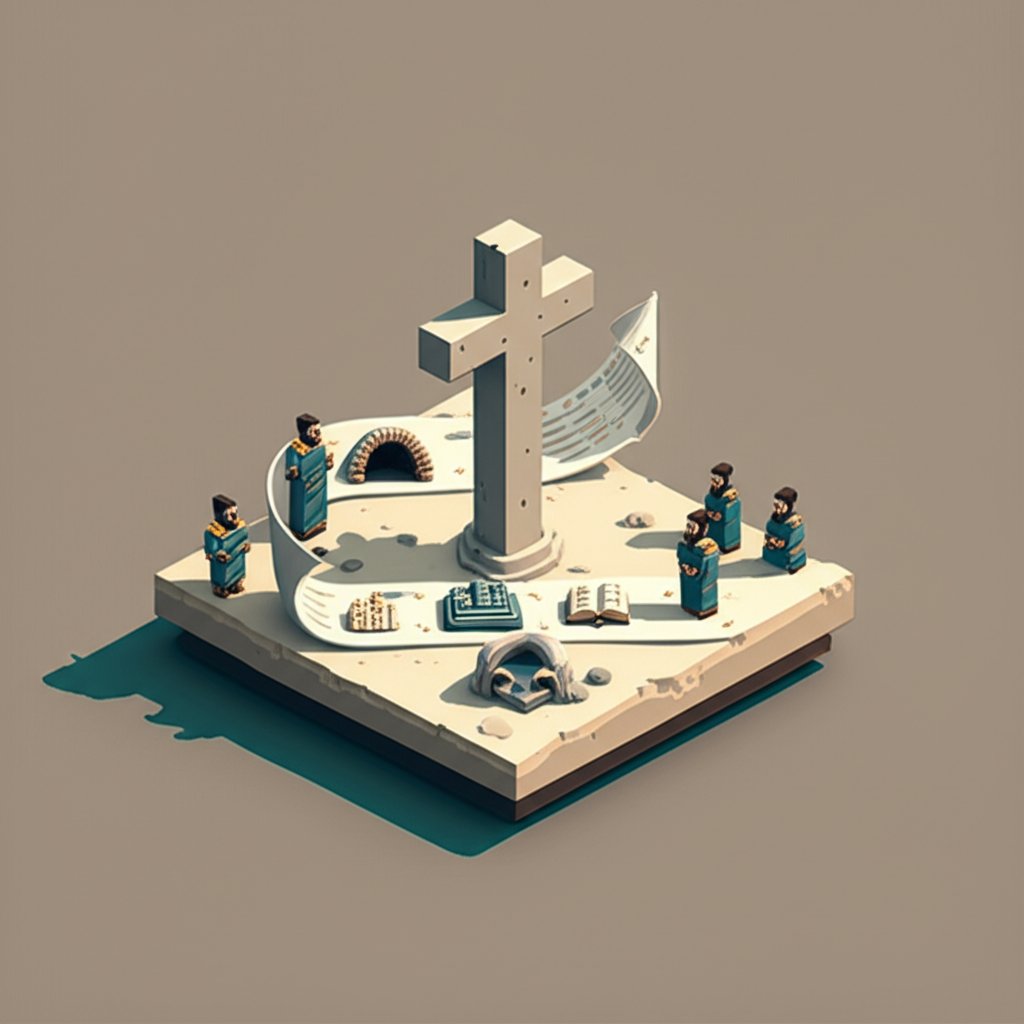
Understanding the chronology of events is vital to grasping the full scope of Early Church History. This Early Church Timeline highlights key moments that shaped the early centuries of Christianity.
- c. 30-33 AD: Pentecost: The Holy Spirit descends, marking the birth of the Church. Peter preaches, leading to thousands of conversions.
- c. 34 AD: Conversion of Saul (Paul) on the road to Damascus.
- c. 45-60 AD: Paul’s missionary journeys throughout the Roman Empire, establishing Christian communities.
- c. 64 AD: Great Fire of Rome; Emperor Nero blames Christians, initiating the first major Roman persecution. Martyrdoms of Peter and Paul (traditionally).
- c. 70 AD: Destruction of the Temple in Jerusalem by the Romans, a pivotal event separating Christianity further from Judaism.
- c. 95 AD: Persecution under Emperor Domitian. Writing of the Book of Revelation (traditionally).
- c. 100-150 AD: Era of the Apostolic Fathers (Clement, Ignatius, Polycarp).
- c. 130-202 AD: Ministry of Irenaeus of Lyons, combating Gnosticism.
- c. 165 AD: Martyrdom of Justin Martyr.
- c. 177 AD: Persecution in Lyon and Vienne, Gaul.
- c. 185-254 AD: Life and influential work of Origen of Alexandria.
- c. 202 AD: Persecution under Emperor Septimius Severus.
- c. 249-251 AD: Persecution under Emperor Decius, requiring loyalty oaths and sacrifices to Roman gods.
- c. 257-260 AD: Persecution under Emperor Valerian. Martyrdom of Cyprian of Carthage.
- c. 303-311 AD: The “Great Persecution” under Emperor Diocletian, the most severe official persecution of Christians.
- 312 AD: Battle of Milvian Bridge; Constantine I attributes victory to the Christian God.
- 313 AD: Edict of Milan: Constantine and Licinius grant religious freedom throughout the Roman Empire, ending persecution.
- 325 AD: Council of Nicea convenes. Condemnation of Arianism; formulation of the Nicene Creed, affirming the divinity of Christ.
- 381 AD: First Council of Constantinople. Reaffirms Nicene Creed, solidifies doctrine of the Holy Spirit. Christianity becomes the official state religion of the Roman Empire under Emperor Theodosius I.
- 397 AD: Council of Carthage ratifies the New Testament canon.
- 410 AD: Sack of Rome by Visigoths. Augustine begins writing “City of God.”
- 430 AD: Death of Augustine of Hippo, the most influential of the Latin Church Fathers.
- 431 AD: Council of Ephesus. Condemns Nestorianism; affirms Mary as Theotokos.
- 451 AD: Council of Chalcedon. Defines Christ as having two natures (divine and human) in one person.
- 476 AD: Fall of the Western Roman Empire.
- c. 529 AD: St. Benedict establishes the monastery of Monte Cassino, laying foundations for Western monasticism.
This timeline illustrates the dynamic interplay between theological development, political shifts, and the unwavering commitment of early believers, all contributing to the rich History of Christianity.
Conclusion: The Enduring Legacy of Christianity’s Origins
Our journey through Early Church History reveals a remarkable saga of faith, intellectual rigor, and profound societal impact. From its humble beginnings as a nascent movement in Judea, Christianity navigated immense challenges—persecution, internal controversies, and the complexities of integrating with a vast empire—to emerge as a global religion.
The tireless work of the apostles, the intellectual contributions of the Church Fathers, the defining theological statements made at councils like the Council of Nicea, and the chronological unfolding captured in the Early Church Timeline all weave together to form the foundational narrative of the History of Christianity. Understanding these origins is not merely an academic exercise; it offers invaluable insight into the enduring beliefs, practices, and identity of Christians worldwide, demonstrating the resilience and transformative power of a faith forged in the crucible of antiquity.
As we reflect on these foundational centuries, we are invited to consider the profound journey of Christianity and its lasting influence on civilization. What aspects of this early unfolding resonate most with your understanding of faith today?
FAQ: Your Questions About Early Church History Answered
Q1: What is considered the starting point of Early Church History?
A1: Early Church History typically begins with the Pentecost event (c. 30-33 AD), following the resurrection and ascension of Jesus Christ, when the Holy Spirit descended upon the apostles, leading to the rapid growth of the first Christian communities.
Q2: Who were the most influential figures in the Early Church?
A2: Key figures include the Apostles Peter and Paul, who were instrumental in spreading the Gospel; the Apologists like Justin Martyr and Tertullian, who defended the faith; and the great Church Fathers such as Origen, Athanasius, Ambrose, Jerome, and Augustine, whose theological writings profoundly shaped Christian doctrine.
Q3: What were the major challenges faced by the Early Church?
A3: The Early Church faced significant challenges, including severe persecutions from the Roman Empire (e.g., under Nero and Diocletian), internal theological disputes and heresies (like Gnosticism and Arianism), and the struggle to define its own identity and canon of Scripture.
Q4: What was the significance of the Council of Nicea?
A4: The Council of Nicea, convened in 325 AD by Emperor Constantine, was crucial for Early Church History. It addressed the Arian Controversy by affirming the full divinity of Jesus Christ and formulated the Nicene Creed, a foundational statement of Trinitarian doctrine (God as Father, Son, and Holy Spirit) that remains central to Christian orthodoxy.
Q5: How did Christianity spread so rapidly in the early centuries?
A5: The spread of Christianity was fueled by several factors: the fervent missionary efforts of apostles like Paul; the powerful witness of martyrs; the inclusive message that appealed across social classes; the existing Roman road network; favorable social conditions (like relative peace); and the perceived moral superiority and communal care within Christian communities.
Q6: What is an Early Church Timeline and why is it important?
A6: An Early Church Timeline provides a chronological overview of key events, figures, and developments from the birth of Christianity to roughly the 6th century AD. It’s important because it helps to understand the sequence of challenges, doctrinal formations, and societal shifts that collectively shaped the History of Christianity.
Q7: How did the Roman Empire’s relationship with Christianity change over time?
A7: Initially, the Roman Empire viewed Christianity with suspicion and often subjected Christians to severe persecution. This changed dramatically with Emperor Constantine’s conversion and the Edict of Milan in 313 AD, which granted religious tolerance. By the end of the 4th century (380 AD under Emperor Theodosius I), Christianity became the official state religion of the Roman Empire.
Q8: What role did the Church Fathers play in the development of Christian doctrine?
A8: The Church Fathers were instrumental in clarifying, defending, and articulating core Christian doctrines. Through their extensive writings, sermons, and participation in councils, they interpreted Scripture, combated heresies, elaborated on the nature of God, Christ, and the Holy Spirit, and established the theological framework that would guide the History of Christianity for centuries.
